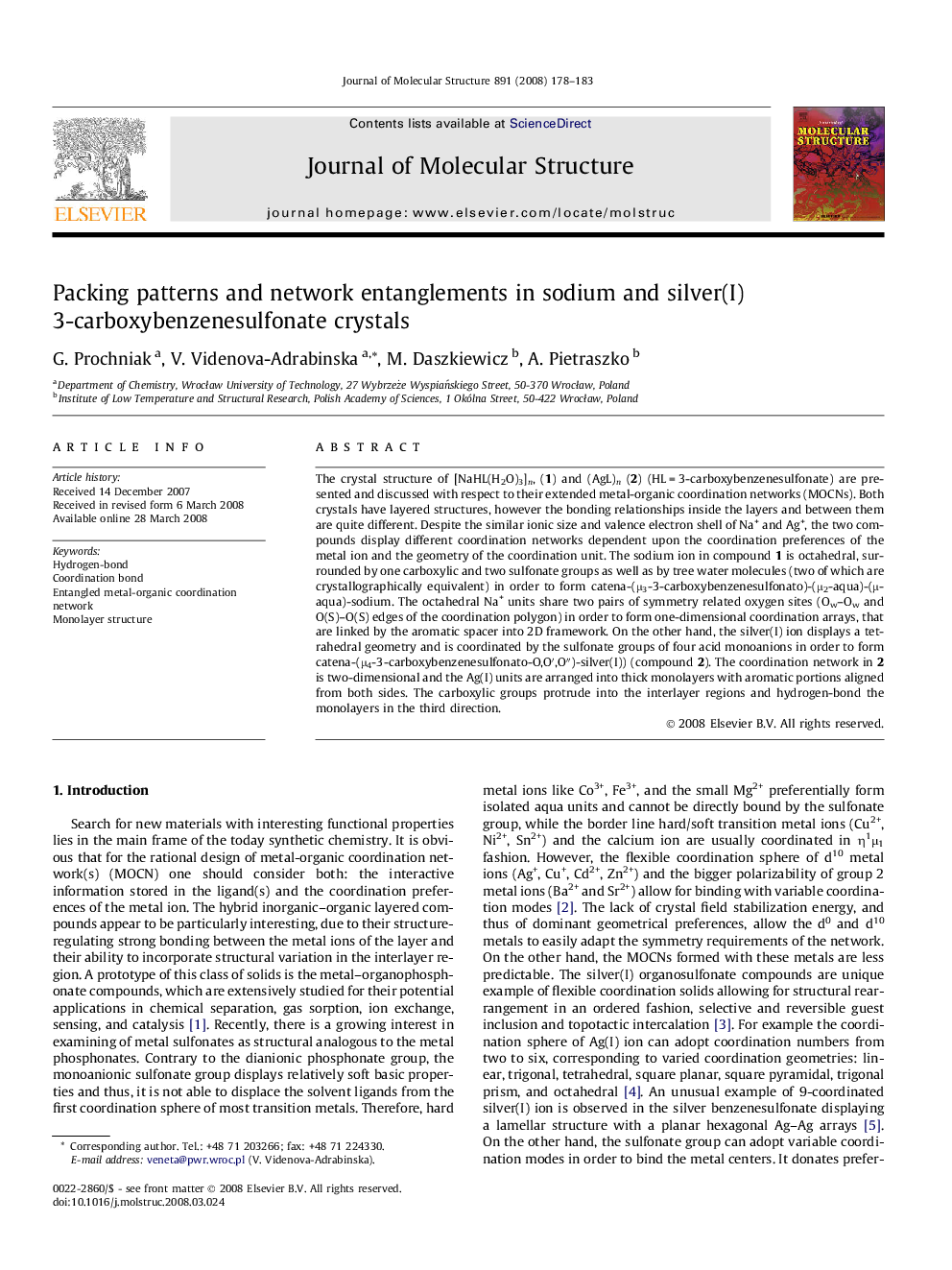| Article ID | Journal | Published Year | Pages | File Type |
|---|---|---|---|---|
| 1410602 | Journal of Molecular Structure | 2008 | 6 Pages |
The crystal structure of [NaHL(H2O)3]n, (1) and (AgL)n (2) (HL = 3-carboxybenzenesulfonate) are presented and discussed with respect to their extended metal-organic coordination networks (MOCNs). Both crystals have layered structures, however the bonding relationships inside the layers and between them are quite different. Despite the similar ionic size and valence electron shell of Na+ and Ag+, the two compounds display different coordination networks dependent upon the coordination preferences of the metal ion and the geometry of the coordination unit. The sodium ion in compound 1 is octahedral, surrounded by one carboxylic and two sulfonate groups as well as by tree water molecules (two of which are crystallographically equivalent) in order to form catena-(μ3-3-carboxybenzenesulfonato)-(μ2-aqua)-(μ-aqua)-sodium. The octahedral Na+ units share two pairs of symmetry related oxygen sites (Ow–Ow and O(S)–O(S) edges of the coordination polygon) in order to form one-dimensional coordination arrays, that are linked by the aromatic spacer into 2D framework. On the other hand, the silver(I) ion displays a tetrahedral geometry and is coordinated by the sulfonate groups of four acid monoanions in order to form catena-(μ4-3-carboxybenzenesulfonato-O,O′,O″)-silver(I)) (compound 2). The coordination network in 2 is two-dimensional and the Ag(I) units are arranged into thick monolayers with aromatic portions aligned from both sides. The carboxylic groups protrude into the interlayer regions and hydrogen-bond the monolayers in the third direction.
